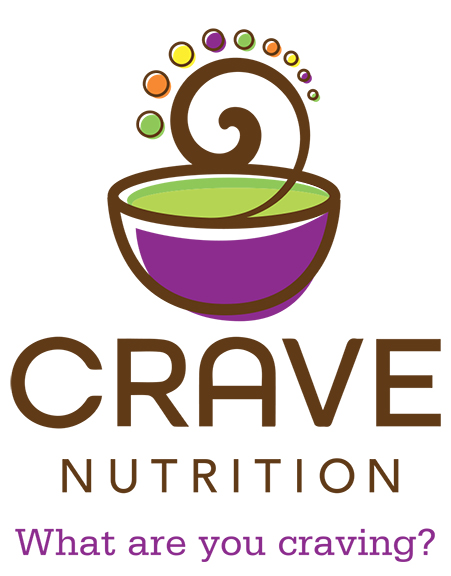Burning Questions About Sunscreen
- Posted by CraveAdmin
- On August 17, 2021
- 0 Comments

May 31, 2018
Sunscreen is a hot topic this time of year (pun intended!), but the reports are often conflicting. We’re told to use sunscreen to protect against sun damage and to prevent skin cancer, but we’re also told that chemicals in sunscreen could be harmful. And if that’s not confusing enough, we’re told that our body needs vitamin D aka the “sunshine vitamin.”
When summer rolls around, many of us are itching to get outside and soak up the sun. Fresh air and outdoor activities are healthy and fun, but your mother was right; it’s important to limit your sun exposure and use sunscreen!
What about vitamin D?
It’s true – research says that Vitamin D is critical for good health and an estimated 80% of Americans are Vitamin D deficient. Dr. Mark Hyman says, “80 to 100 percent of the vitamin D we need comes from the sun (other sources include fish oil, wild salmon, mackerel, sardines, and eggs).” So how much sun, without sunscreen, do we need? The Vitamin D Council (yes, there is actually a Vitamin D Council) says that “you only need to expose your skin for around half the time it takes for your skin to begin to burn.” So if you’re abstaining from using sunscreen in an effort to get your vitamin D (I used to be guilty of this) you’ve got about 10 – 20 minutes, and then you need to protect yourself from the sun’s harmful rays.
Tips to Stay Safe in the Sun
- Wear clothing that provides protection against UVA and UVB rays. Check out products from Coolibarand Solumbra, or dozens of others available online. When in the water (or biking, hiking and running outdoors), wear a swim shirt – today’s versions are good-looking and breathable, and you don’t have to worry about chemicals or the sunscreen washing off. (Do make sure you use sunscreen on the parts of your face and body that are not protected by clothing.)
- Wear a wide-brimmed hat to protect your face, and wear sunglasses whenever you are outside, and when you are driving.Eyewear protects the sensitive skin around your eyes and can reduce the risk of developing cataracts. Make sure your sunglasses provide both UVA and UVB protection.
- Avoid sun exposure during the hottest part of the day: 12N to 4PM.
- Avoid burning! (I know I’m stating the obvious here, but sometimes we need to be reminded ; ) Sunburns significantly increase your chances of developing melanoma, according to skincancer.org
How to Pick the Right Sunscreen
Not all sunscreens provide the protection they claim. According to the Environmental Working Group (EWG), “half of the U.S. sunscreens that meet the United State’s FDA rules would not make it to store shelves in Europe,” which has stricter standards.
According to the EWG, here’s what should and shouldn’t be in your sunscreen:
| AVOID | LOOK FOR | |
| INGREDIENTS | Oxybenzone Vitamin A (retinyl palmitate) Added insect repellent |
Zinc oxide Avobenzome Mexoryl SX |
| PRODUCTS | Sprays Powders SPF above 50 |
Cream Broad – spectrum protection Water-resistant SPF to suit your needs, 15-50 |
One of the biggest takeaways from this chart is to avoid oxybenzone (also known as benzophenone)! According to a study by the U.S. Centers for Disease Control (CDC), 97% of Americans are contaminated with this widely-used chemical in sunscreens (as well as body care products), which can cause allergic reactions, hormone disruption and cell damage.
In fact, Hawaii just passed a law to ban sunscreens that contain oxybenzone (and octinoxate)! These chemicals are killing coral reefs by bleaching them white and interfering with fish and wildlife development who live in the coral reefs. If this chemical is killing coral reef, imagine what it’s doing to your skin!
Why avoid sprays? They often don’t evenly cover your skin with sunscreen and can be inhaled very easily.
Why avoid high-SPF products? People tend to spend the day in the sun with confidence that their skin is well protected.
Why avoid using sunscreen with insect repellent? The EWG says that sunscreens with insect repellents contain “penetration enhancers,” which aid your skin in absorbing chemicals.
EWG’s Top-ranking Sunscreens:
Each year, the EWG comes out with their ranked list of recommended sunscreens. Here’s what made the top of the 2018 safe sunscreen list:
- Adorable Baby Sunscreen Stick, SPF 30+
- Adorable Baby Sunscreen, SPF 30+
- Kabana Organic Skincare Green Screen D Sunscreen, SPF 35
- Loving Naturals Sunscreen Stick, SPF 30+
- Loving Naturals Sunscreen, Clear Body, SPF 30+
- Tropical Sands Sunscreen, SPF 50
- True Natural Neutral 50 Sunscreen for Sensitive Skin, SPF 50
- True Natural Ultra Protect 50 Antioxidant Sunscreen, SPF 50
- Waxhead Sun Defense Baby Zinc Oxide Sunscreen, SPF 35
- Waxhead Sun Defense Sunscreen Stick, SPF 30
Other popular brands that made the top of the list as best and safest include: All Good, Aveeno, Kiss My Face, Neutrogena Pure, Sunology and Tom’s of Maine.
Which Sunscreen is your favorite?
Click here to see how the EWG rates it on protection and ingredients, including a separate list for top-ranked kids’ sunscreens!
Before you head out for a day in the sun, soak up these tips to keep your skin safe! Stay COOL and Have FUN!



